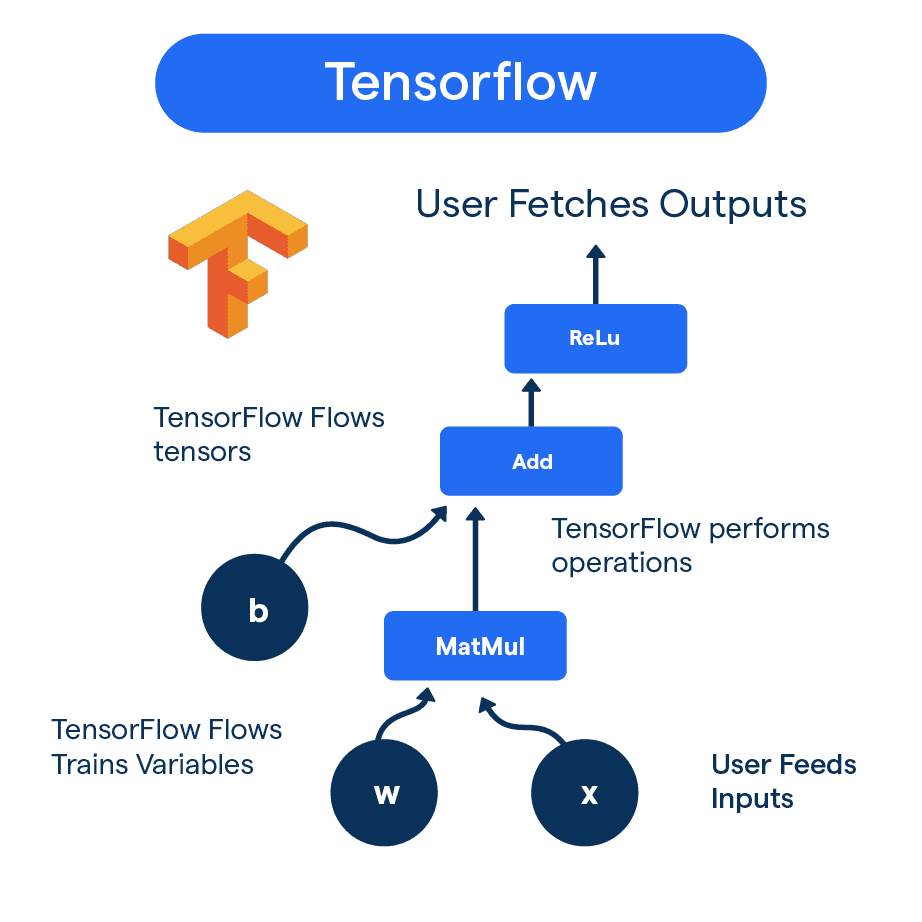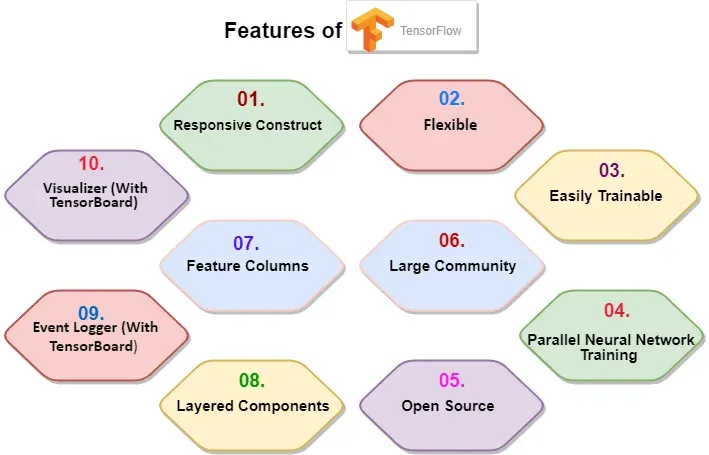Step into simplified artificial intelligence (AI) development using TensorFlow for Python!
With the increasing use of AI, developers are always looking for tools that can streamline the development process.
And that's where TensorFlow comes in - it is one of the most popular and powerful libraries for machine learning that simplifies the AI development process.
As of March 5, 2024, the TensorFlow repository on GitHub boasts over 183,000 stars. This signifies the interest and engagement of the developer community.
It is one of the most popular frameworks for machine learning that supports artificial neural network models.
Let’s explore its features and benefits and how to start with your first AI model.
So, buckle up, and let's simplify AI development together!
What is TensorFlow?
TensorFlow is an open-source library developed by Google Brain that allows you to build and train machine learning models.

It is built on the concept of tensors, multi-dimensional arrays representing the data used by machine learning algorithms.
These tensors flow through a graph structure, where each node represents an operation and the edges represent the data flow.
Features and Benefits of TensorFlow
TensorFlow offers a wide range of features and benefits that make it the go-to choice for AI development

Scalable and Distributed Computing
TensorFlow allows you to scale your models from running on a single machine to running on a distributed cluster.
This enables you to train large models and efficiently process huge amounts of data.
Versatility in Model Development
With TensorFlow, you can build various machine learning models, including neural networks, deep learning models, and reinforcement learning models.
Its flexibility allows you to experiment and explore different approaches to solving complex problems.
Easy Deployment
TensorFlow provides tools and libraries to deploy your trained models across various platforms, including mobile devices and the cloud.
This makes it easier to put your models into production and make them accessible to users.
Why Python for TensorFlow?
Python, a highly popular programming language, serves as the interface for TensorFlow. There are several reasons why Python is the language of choice for working with TensorFlow
A Versatile and Effective Language
Python is a general-purpose language, and its simplicity in syntax makes it popular among programmers and beginners.
Its readability makes the code understandable and user-friendly.
Python Libraries for Data Science
Python has an extensive range of libraries for Data Science and Machine Learning, such as NumPy, Pandas, Matplotlib, Scikit-learn, and more.
These make it easier to manipulate, analyze, and visualize data.
BotPenguin allows users to integrate some of the prominent NLP models like GPT 4, Google PaLM and Anthropic Claude to create AI-powered chatbots for platforms like:
- WhatsApp Chatbot
- Facebook Chatbot
- Wordpress Chatbot
- Telegram Chatbot
- Website Chatbot
- Squarespace Chatbot
- Woocommerce Chatbot
- Instagram Chatbot
Prevalence in Machine Learning Community
Python has become the language of choice in the Machine Learning community.
Owing to its simplified syntax, ease of learning and robust library support, it has gained popularity among machine learning practitioners.
Ideal Language for TensorFlow
Python being the primary language in which TensorFlow was developed and continues to be maintained, it has seamless integration and support.
This allows developers to utilize TensorFlow's full functionality with less effort.
Efficient Prototyping
Python allows for quick idea testing and efficient prototyping – a vital aspect in Machine Learning and Deep Learning development processes.
Using Python makes this process faster and more effective.
Suggested Reading:
How to Get Started with Python and TensorFlow?
Getting started with Python and TensorFlow is an exciting journey into deep learning and artificial intelligence. Here's a step-by-step guide to help you begin:
Setting Up Your Environment
Before starting with TensorFlow, you need to have Python installed on your machine. You can download and install Python from official Python website.
After installing Python, it's recommended to create a virtual environment for your TensorFlow projects.
Suggested Reading:
Custom Chatbot Development Services in 2024: All You Need to Know
Installing TensorFlow
Once Python setup is complete, you can install TensorFlow by using pip, which is a package manager for Python. In your command line, just type pip install tensorflow.
Familiarizing with Basic Python
Before diving into TensorFlow, ensure you're comfortable with basic Python concepts such as variables, data types, functions, and control structures.
Online tutorials and Python documentations are great resources.
Understanding Machine Learning Concepts
TensorFlow is a tool used for machine learning. Familiarize yourself with basic machine learning concepts like regression, classification, and neural networks.
Starting with TensorFlow Basics
Start exploring TensorFlow’s functionalities. Online tutorials and TensorFlow documentation are extremely useful. Learn about creating, training, and implementing a neural network.
Practising with Simple Projects
The most effective way to learn is by doing. Implement simple projects, such as image classification or text generation, to apply and reinforce what you've learned.
Getting started with Python and TensorFlow involves setting up the right environment, understanding the basics of Python programming and machine learning, and getting hands-on experience through practice projects.
Conclusion
Python has made AI development easier by providing a user-friendly and adaptable language for TensorFlow.
Python is an excellent choice for both novice and expert developers because to its simplicity, vast libraries, and strong community support.
You can unleash the full power of artificial intelligence and create unique solutions for a wide range of applications by combining Python with TensorFlow.
So, why delay? Dive into the Python for TensorFlow universe today and start your fascinating AI development journey.


